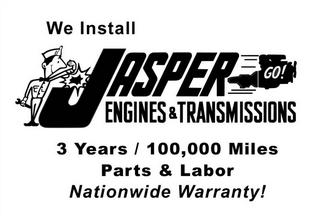
A properly working AC keeps you and everyone else in the vehicle comfortable and cool all the way to your destination. I converted the R12 system in my 93 Daytona, did it all properly, and with R134a it is an icebox.An “evac and recharge” service consists of connecting your car's AC system to a special machine, which vacuums all the old refrigerant and oil from the system, and then refills it to the proper level.Ī vehicle without AC can be a sweaty and uncomfortable ride. If you don't do all of these steps, you are destined for failure. You MUST educate yourself properly before tackling this job, or you can botch it, and can even be seriously injured. Harbor Freight sells a manifold gauge set for $50. And if you have a leak and don't fix it, this entire effort is wasted. If you have a vacuum leak, you won't know without gauges. You CANNOT trust it to have drawn a sufficient vacuum without gauges. You MUST draw a vacuum with a vacuum pump such as shown in your link. You MUST buy a new drier canister (dessicant) and replace the one in the car, because the system has been open and the dessicant needs to be replaced. If there was a big oil smudge/stain on the old condenser, you probably lost more oil and should add a few ounces more. You MUST add about 1-2 oz of PAG oil, buy a plastic bottle of it and pour the 1-2 oz into the condenser prior to installation. I have no technical explanations and I'm certainly not offering advice just reporting my personal experience.ĭo NOT substitute this 12a stuff for R134a.
#AC EVAC AND RECHARGE NEAR ME INSTALL#
Most have switched to Red Tek and report that the systems need less servicing but when they do need recharging they can install Red Tek them selves quickly and inexpensively. Most farmers around here love it too as some equipment sits for most of the year but is needed during the hottest harvest month's and proper A/C recharging is very expensive due to having a Tech come to the farm with his equipment. ago with non functioning A/C and two cans later its still blowing cold. I have several other vehicles with the same results and many friends who use the stuff, including one who bought a 2011 Matrix almost two yrs. The longest term victim is my 1986 Omni Turbo that I bought new, A/C worked for a few years but when it needed a recharge I tried Red Tek and never looked back. It claims to be compatible with all systems and so far I haven't experienced any problems. I wouldn't be able to have working A/C on most of my fleet due to cost it weren't for Red Tek and its kind. It says on the can not to evacuate the system when using it and if you do a vacuum test to let the vacuum go before refilling. Only downside is flamability - possibly only if involved in front end collision / exposure to heat or flame - which is not likely in a working, closed system?Įveryone above is correct but I have been using Red Tek and similar stuff for many years now and have had no problems. I've read where r12a is significantly more efficient refrigerant than 134. So if the dehydrator works, then the only issue is air in the system. I can also buy a can of Red Tek "dry 32" - dehydration treatment which "converts system moisture into an inert silicone oil which combines with the lubricating compressor oils". I was just looking what I can buy locally - don't know if I can buy 134a over-the-counter recharge kits here (Ontario Canada) but apparently I can buy the Red Tech stuff (r12a).

Don't know how much oil is in the system (or - how much oil normally is located in the condenser). I bought a new condenser from Rock auto and was going to swap it in (old condenser is still installed at this point). My condenser was punctured (3 months ago) so I don't know what exactly leaked in or out. Drain the compressor, and it should be just about the complete new system charge amount. That makes it easier to add the proper quantity.
#AC EVAC AND RECHARGE NEAR ME FULL#
I'd also recommend a full flush - that way, you can know all the oil's out of the evaporator and the hoses.


Since it's been converted to R134a, I'd keep it R134a.ĭid you also pick up a new receiver/dryer or accumulator, and a new orifice tube or thermonic expansion valve? Both of those are most likely shot due to the system being opened up. Or other items can be blocked due to the ice formed.Īs to the oil - as NYBo said, you need to remove all you can from the system, and then put in enough to replace it.

3) Worst of all, the water can freeze at the compressor, causing it to blow out. 1) Gets rid of any other gasses, so that the refrigerant of choice can fill the system (and not have any displaced by standard air) 2) It removes ALL moisture, which at best will cause the aluminum to corrode and the water in the air left will freeze in the orifice tube. Your system not only won't last long, it won't cool long.Įvacuation does three things.


 0 kommentar(er)
0 kommentar(er)
